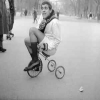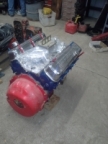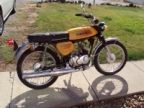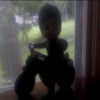- Posts: 751
- Thank you received: 20
I'm about to reinstall my brake pucks
- newOld_kz1000
-
 Topic Author
Topic Author
- Offline
- User
- FlimFlamFlibbityFlee !! BoonFryedShickaMuhZee !!
Sound like a good plan?
This is my rear brake caliper on my 1978 kz1000.
1978 kz1000 A2 with Kerker
1980 Z1 Classic with Kerker
Please Log in or Create an account to join the conversation.
- PLUMMEN
-

- Offline
- User
- Posts: 8139
- Thank you received: 104
Still recovering,some days are better than others.
Please Log in or Create an account to join the conversation.
- donthekawguy
-

- Offline
- User
- Posts: 1913
- Thank you received: 8
Rathdrum Idaho
1971 Kawasaki g3ss
1972 Yamaha R5 350
1965 Suzuki Hillbilly
1964 Yamaha 125
Please Log in or Create an account to join the conversation.
- Patton
-

- Offline
- KZr Legend
- Posts: 18640
- Thank you received: 2098
When reassembled, the piston does not slide back and forth through the rubber seal.
The rubber seal fits tightly around the piston.
When the piston moves outward, the seal deflects from its normal shape as it holds position onto the piston.
When fluid pressure behind the piston dissipates, the seal retreats to its natural position, pulling the piston along with it back to where it started in its unstressed natural position.
Think of bending a rubber eraser between your fingers, then releasing grip, which allows the eraser to regain its original shape.
There's gentle exertion by the eraser in returning to its natural shape.
That's what the seal is supposed to do. Gently return to its natural shape, taking the piston along with it.
And this action won't function properly unless the piston moves easily and smoothly back and forth inside the cylinder.
If the rather gentle force of the seal's retreat can't move the piston backward, then the brake will likely drag as the pads keeps rubbing against the rotor.
This would apply to both pistons.
Good Fortune!
1973 Z1
KZ900 LTD
Please Log in or Create an account to join the conversation.
- Patton
-

- Offline
- KZr Legend
- Posts: 18640
- Thank you received: 2098
Eventually, the piston movement will exceed the seals ability to maintain its grip onto the piston. Then the piston does indeed slide through the seal just enough to allow the seal to regain its grip onto the piston, whereupon the process resumes.
Good Fortune!
1973 Z1
KZ900 LTD
Please Log in or Create an account to join the conversation.
- Motor Head
-
- Offline
- User
- FIX UP YOUR BIKE RIGHT AND CHEAP
- Posts: 5138
- Thank you received: 391
A "C" Clamp will, if placed to push straight, apply a low even pressure to return the piston to the caliper. The piston should fit easily, when seals are removed, then lube thoroughly with fresh brake fluid when seals are fitted.
1982 KZ1000LTD K2 Vance & Hines 4-1 ACCEL COILS Added Vetter fairing & Bags. FOX Racing rear Shocks, Braced Swing-arm, Fork Brace, Progressive Fork Springs RT Gold Emulators, APE Valve Springs, 1166 Big Bore kit, RS34's, GPZ cams.
1980 KZ550LTD C1 Stock SOLD Miss it
1979 MAZDA RX7 in the works, 13B...
Please Log in or Create an account to join the conversation.
- newOld_kz1000
-
 Topic Author
Topic Author
- Offline
- User
- FlimFlamFlibbityFlee !! BoonFryedShickaMuhZee !!
- Posts: 751
- Thank you received: 20
Tapping should not be necessary, as the piston should move freely within the cylinder.
When reassembled, the piston does not slide back and forth through the rubber seal.
The rubber seal fits tightly around the piston.
When the piston moves outward, the seal deflects from its normal shape as it holds position onto the piston.
When fluid pressure behind the piston dissipates, the seal retreats to its natural position, pulling the piston along with it back to where it started in its unstressed natural position.
That's what the seal is supposed to do. Gently return to its natural shape, taking the piston along with it.
And this action won't function properly unless the piston moves easily and smoothly back and forth inside the cylinder.
If the rather gentle force of the seal's retreat can't move the piston backward, then the brake will likely drag as the pads keeps rubbing against the rotor.
This would apply to both pistons.
Good Fortune!
I'm puzzled by this, and it 100% reflects the fact that this is only the 2nd time in life I've rebuilt a caliper.
The puck when no seal is installed inside the cylinder -- does in fact move back and forth in the cylinder, I tried it with the parts dry and clean.
I'm thinking that's what you mean above - "the piston should move freely within the cylinder."
After the seal's been installed inside the cylinder (not talking about the rubber dust ring here, the ring that fits around the outside exposed rim of the puck) -- I'm referring here to the rubber seal inside the cylinder -- the friction of the seal will not allow the piston to move around like when the seal was out. But I think this is okay, I think this is what you meant when you said - "When reassembled, the piston does not slide back and forth through the rubber seal. The rubber seal fits tightly around the piston." Yep, the seal is tight around the piston, no way am I getting the piston to easily slide into the cylinder.
I got the 2 pistons re-installed. I had cleaned the cylinder with IPA (isopropyl alcohol), wiped it off and waited for it to fully evaporate. Then with the rubber seal ring inside into the piston's cylinder -- I put a thin coat of fresh brake fluid around that rubber seal and around the walls of the cylinder.
I then put a thin coat of fresh brake fluid around the piston too.
* on one side of the caliper, the piston slid in with strong-hand gripping at 2 points, 180 degrees opposite each other, using both hands to squeeze the puck into the cylinder.
* on the other side of the caliper, strong squeezing like above didn't work and I had to tap the puck lightly about 2-3 times with a hammer then it was in.
Sound cool?
I then installed the rubber dust rings around the outer exposed rim of each puck.
1978 kz1000 A2 with Kerker
1980 Z1 Classic with Kerker
Please Log in or Create an account to join the conversation.
- Patton
-

- Offline
- KZr Legend
- Posts: 18640
- Thank you received: 2098
...The puck when no seal is installed inside the cylinder -- does in fact move back and forth in the cylinder...
* on one side of the caliper, the piston slid in with strong-hand gripping...
* on the other side of the caliper, strong squeezing like above didn't work and I had to tap the puck lightly about 2-3 times with a hammer then it was in...
Sound cool?....
All cool, so long as the piston that required light tapping moved freely inside its cylinder before the rubber seal was fitted.
Imo, strong squeezing should have been sufficient to push both of the pistons into position through the seals and into the cylinders.
Would therefore reiterate donthekawguy's admonition to clean out the groove in the caliper where the seals sits. Because crud in the groove would likely impair full seating of the seal, resulting in imperfect fitment of the seal around the piston.
That said, it is what it is. And proof of the pudding will be whether in actual operation the piston retreats upon releasing pedal pressure, and removes pressure of pads against the rotor. And without any leakage of fluid past the seal.
Then it will be time to pop a cork.
Good Fortune!
1973 Z1
KZ900 LTD
Please Log in or Create an account to join the conversation.
- newOld_kz1000
-
 Topic Author
Topic Author
- Offline
- User
- FlimFlamFlibbityFlee !! BoonFryedShickaMuhZee !!
- Posts: 751
- Thank you received: 20
Okay this having to push pretty hard to re-intall the pistons in the left and right halves of the rear caliper got me worried.All cool, so long as the piston that required light tapping moved freely inside its cylinder before the rubber seal was fitted.
Imo, strong squeezing should have been sufficient to push both of the pistons into position through the seals and into the cylinders.
Would therefore reiterate donthekawguy's admonition to clean out the groove in the caliper where the seals sits. Because crud in the groove would likely impair full seating of the seal, resulting in imperfect fitment of the seal around the piston.
So before I remounted the caliper on the bike, I disassembled it again, removed the pucks (which came out much faster this time) and removed the rubber ring seal from that groove on the inside wall of the caliper cylinder.
What I failed to notice before was -- a hardened build-up of crud in the groove. It probably gets really hot there from heat transferred from the brake piston and the crud was a bit disguised, fitting like a layer on the groove's surfaces.
I used my brass o-ring remover tool and discovered that in fact the crud was pretty deep in the groove. I'm glad I took it back apart. I then spent 1/2 hour with my brass oring pick breaking up the crud, and a nylon brush, and finally some IPA alcohol and '0000' super fine steel wool to clean the groove.
Now when I did the reinstall of the pucks, I did exactly the same as yesterday: a light film of brake fluid on the puck surface and on the cylinder walls and the rubber seal ring.
This time the 2 pucks easily went in all the way with only moderate finger pressure, what a difference.
The layer of crud in the groove that I had thought was only heat discoloration was not allowing the seal to seat fully into its grove due to the thickness of the heat-hardened junk in the groove, and thus the rubber seal was squeezing against the puck too firmly, making it difficult to get the puck to go back in.
I'm sure this would have made the pucks very 'sticky' had I gone on to mount the caliper without taking a 2nd look at the grooves. Thanks Patton and donthekawguy for your tip.
1978 kz1000 A2 with Kerker
1980 Z1 Classic with Kerker
Please Log in or Create an account to join the conversation.
- newOld_kz1000
-
 Topic Author
Topic Author
- Offline
- User
- FlimFlamFlibbityFlee !! BoonFryedShickaMuhZee !!
- Posts: 751
- Thank you received: 20
Got my rear brake all connected and started to bleed it to remove the air.
Air came out the bleeder nipple.
And more air with some brake fluid.
And more air with more fluid.
The caliper's two pistons were only very slightly rocking inward and outward just a hair, only enough to feel them, not moving enough to actually SEE the pucks moving.
I pumped the brake pedal so many times -- I BROKE THE HUGE RETURN SPRING on the pedal.
I kept the level up of brake fluid in the master cylinder.
I bled the brake for 1 hour (I *really* wanted it to function after all the time I've spent on the rebuild.)
I went through nearly a full m/c of fluid in the bleed process today.
I wondered "maybe the reason I'm seeing all this air in my brake bleed process because there's an air leak" but then I thought, since any air in the system will have fluid too, if there was an air leak I'd find a fluid leak to.
I checked the following for leaks of fluid and found none:
1) the 2 connection points of the brake hose -- no fluid leak (you'd think that if there was an air leak there'd be a fluid dampness or leak at the same location)
2) the pucks -- no fluid
3) around the point where the 2 caliper halves fit together -- no fluid
4) the length of the hose -- no fluid leak
5) at the bottom of the master cylinder that accepts the the brake pedal pusher rod -- no fluid leak, so I guess the m/c piston is fine as this brake pusher rod pushes on the m/c piston, no fluid there
6) the bolt on the side of the m/c
Finally no more air or fluid would come out. It just stopped. I would pump the rear brake pedal just as I'd done for 1 hour and all of a sudden -- no more air, no more fluid coming out of the bleed nipple. Pucks not moving in the caliper.
I am frigging demoralized. I have spent hours on this rear brake.
Is there a likely cause? Right now the m/c when pumped is no longer putting out air and fluid at the bleed nipple, it just stopped.
I'm wondering if I hosed the m/c piston wall during my cleaning. I looked at it and didn't appear so, but I am a raw novice with this level of brake work.
Is it possible the m/c piston shaft is hosed?
Or something else?
1978 kz1000 A2 with Kerker
1980 Z1 Classic with Kerker
Please Log in or Create an account to join the conversation.
- Patton
-

- Offline
- KZr Legend
- Posts: 18640
- Thank you received: 2098
Try introducing new fluid into the system by forcing it through loosened bleeder valve. Be careful to not introduce any air. And watch until fluid enters from bottom of m/c reservoir and fills the reservoir.
This essentially back-fills the system.
Minimizes air in fluid, but will still require successful bleeding.
It does sound as if not building pressure. Which would indicate faulty m/c function for whatever reason.
Would again test m/c for ability to forcefully eject fluid when operated.
Good Fortune!
1973 Z1
KZ900 LTD
Please Log in or Create an account to join the conversation.
- seanbarney41
-

- Offline
- User
- '79 kz1000 LTD '75 Honda CB750
- Posts: 440
- Thank you received: 23
Please Log in or Create an account to join the conversation.
